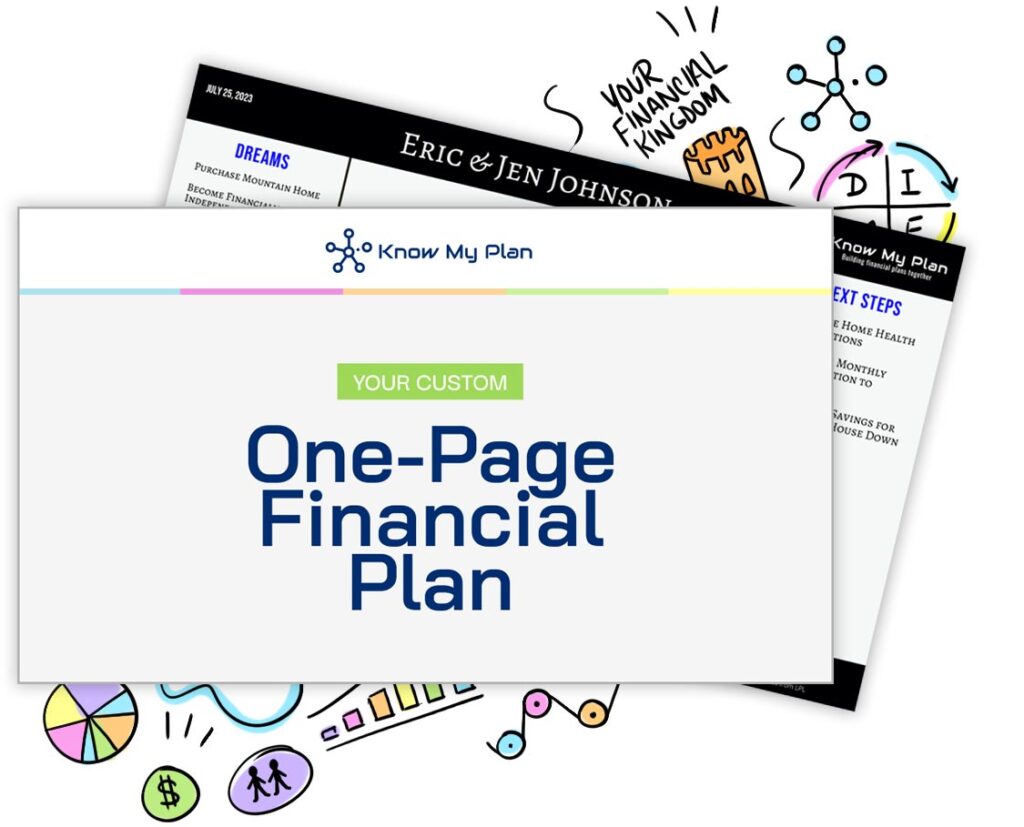
One of my biggest pet peeves about the financial planning industry is the desire to make the process sound complicated.
The vast majority of financial planning comes down to answering six big questions.
Are there additional questions that come up during the planning process? Yes, but most of the time, they are derivatives of the Big 6.
The Big 6
- What happens if I die?
[Life insurance needs analysis] - What happens if I can’t work?
[Disability insurance needs analysis] - How do we pay for our children’s education?
[College Planning] - How do we fund retirement?
[Retirement Income Plan] - What happens if we need care?
[Long-Term Care analysis] - How do we optimally leave a legacy?
[Estate Planning]
Not only is the financial planner’s job to listen to your desires and succinctly answer the questions above, but to ensure that all of the answers are coordinated.
Often, the answers become siloed. The CPA – Estate Planner – Investment Manager – and Financial Planner must be on the same page for optimal results.
Financial planning is often only as strong as its weakest link.
A beautiful investment strategy can be derailed by not planning for long-term care.
Carefully crafting Roth conversions to minimize taxes throughout your lifetime can be offset by a permanent disability.
PUTTING A PLAN INTO ACTION
A husband and wife had recently relocated to the Charlotte area with a child and a big lovable dog. The husband, a 40-year-old executive at a large corporation, knew they needed guidance.
Finding a guide became a high priority with a new job, scattered investment accounts, old retirement plans, and a lack of time.
With their free time, they wanted to spend it as a family.
We defined their dreams (living in the mountains, playing guitar, watching hockey, and eating good Thai food) and devised a best-case guess of how much it would cost monthly to fund this life today!
After diving into their financial situation, there were some gaps.
Life insurance needs analysis discovered a gap between the coverage he needed if he passed away today and what was provided at his job.
- Solve: 20-year term life insurance.
His largest asset was his ability to earn an income. His employer had a plan, but it was not portable, and he believed he would continue to change jobs for the rest of his working career.
- Solve: individual disability income insurance policy.
Both spouses had old retirement plans scattered through various jobs over the past 20 years.
- Solve: consolidate into an IRA and a Roth IRA for each spouse.
Disclosure:
- Leave the money in his/her former employer’s plan, if permitted;
- Roll over the assets to his/her new employer’s plan if one is available and rollovers are permitted;
- Roll over to an IRA;
- Cash-out the account value.
Crunching The Numbers
Next, I get to geek out on math and figure out how much this couple needs to fund their best life.
- Get Numbers through time value of money calculations!
- Adjust for inflation.
We now know how much we have in investments today and how much we need to become financially independent.
I define financial independence as the time when work becomes optional.
Now, we dial in a game plan for where we will invest.
Where To Invest
Luckily, his employer plan allows for after-tax contributions. WOW! This is a game changer for a younger executive wishing to retire early.
- Solve: client is contributing $22,500 to his Roth 401k, and then he is contributing another $20,000 to his After-Tax 401k. We then are rolling over the After-Tax 401k to his Roth IRA annually. This strategy is often called the Mega Back-Door Roth or a Super Roth. Please note this is not using cash-value life insurance.
- At a conservative 6% return, this should fund retirement.
We then coordinated the plan with a local CPA. He signs off on the plan to minimize taxes over the client’s life and not just minimize taxes in one year.
We aim to keep this client in the zero percent tax bracket in retirement.
Education Planning
We still must fund education. One of their top priorities outside of living in the mountains.
- Solve: 529 Plan
- Through a quick Google search to find out the cost of education at Appalachian State, we are off and running on a time value of money calculation.
- We establish a monthly contribution to fund retirement.
Legal Documentation
Next, we make sure they have their essential legal documents in order. The family is comfortable working online and virtually.
- Solve: The clients utilize a trusted legal team to complete their documents. They now have a will, medical directives, and durable power of attorney.
Preparing for the Unknown
The elephant in the room, what happens if I need care?
- Solve: A hybrid life insurance policy with a long-term care rider. The application is pending. Fingers crossed.
We answer these questions in real time with the families that we guide.
When it comes to financial planning, it’s simple but not easy.
— Nic Nielsen, CFP®
We are a full-service financial advisory company that allows you to make a one-page plan for your money and prepare for your future. Learn more about what we do and how we can help you here.
_____________________







